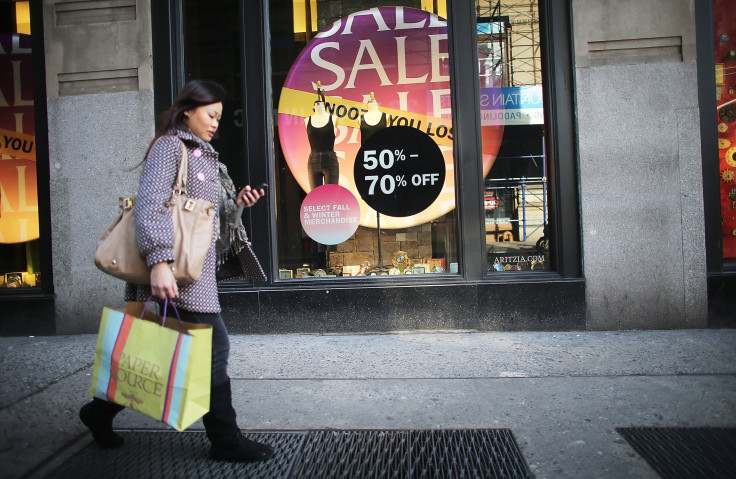Consumer Spending Flat In December, While Personal Incomes, Savings Rose

Consumer spending was flat in December while personal incomes and savings increased, the Commerce Department said Monday. Personal income rose $42.5 billion, or 0.3 percent, while the personal savings rate increased 5.5 percent, the highest since 2012. The readings show Americans have more money to spend but are socking that money away instead of spending it.
According to Goldman Sachs, the flat personal spending reading was “in line with the weak December retail sales report and some modest deceleration in services expenditures reported in last week’s Q4 GDP report.” Friday’s gross domestic product report from the Department of Commerce showed fourth-quarter GDP was a lackluster 0.7 percent. But the data show that consumer spending increased 3.1 percent in 2015, the most in a decade.
Core personal consumption expenditures (PCE), also known as the PCE price deflator, a measure of goods and services targeting individuals excluding energy and food, was flat month over month and increased 1.4 percent year over year.
Core PCE is the Federal Reserve’s preferred way of measuring inflation and it remains well below the target 2 percent that the Fed considers a stable number.
The Fed began raising its key interest rate in December for the first time in nearly a decade and will meet in March to consider a second rate hike. But the PCE reading, along with larger concerns about a slowdown in growth, could compel the Fed to delay further interest rate increases.
“December’s personal income and spending suggest that the outlook for first-quarter real GDP growth is encouraging,” Paul Ashworth, chief U.S. economist for Capital Economics, said in a research note. “But the lack of inflationary pressure in the PCE deflator measures of prices is another reason why the Fed could stand pat in March.”
© Copyright IBTimes 2024. All rights reserved.





















